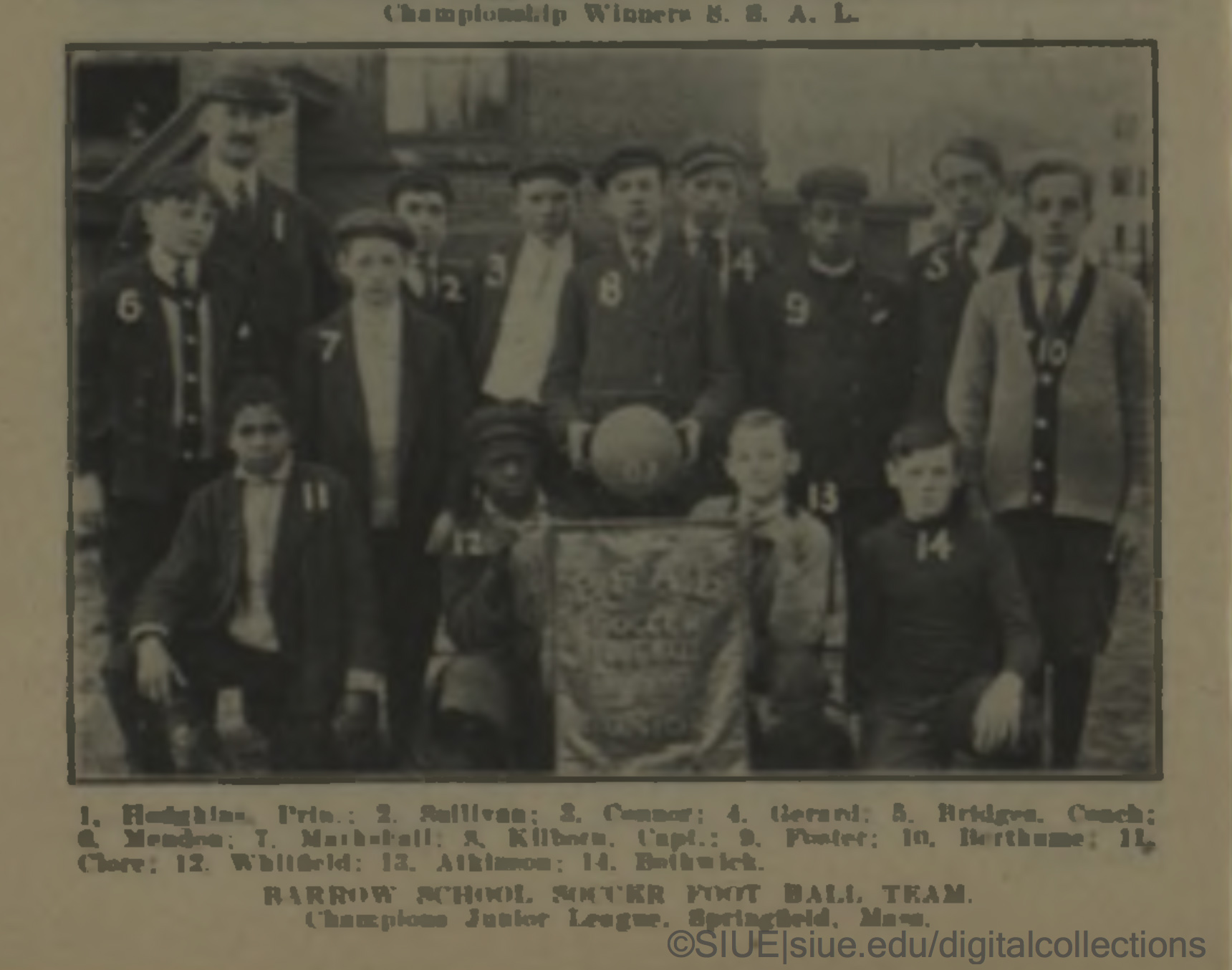
A photo in the 1909-10 Spalding’s Soccer Foot Ball Guide shows the “Barrow School Socker Foot Ball Team” of Springfield, Massachusetts, after winning the city’s Junior League Championship. Twelve boys and two adult men – the school principal and the team’s coach – stand behind a banner celebrating their accomplishment. Three of the boys are African American.
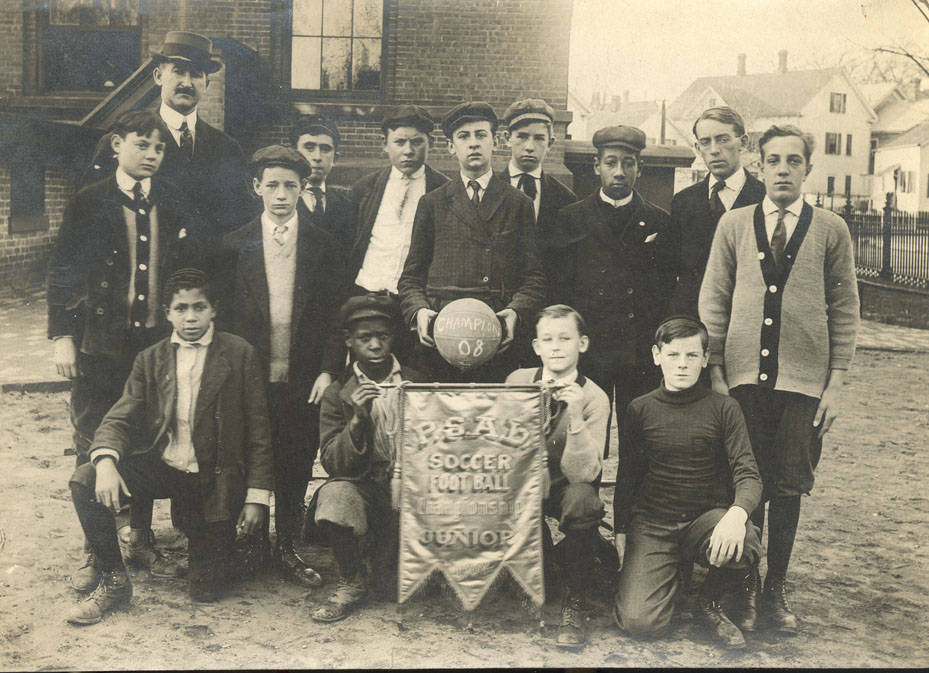
Generally, soccer in the United States had no established history of segregation and in many places had no barriers against players of color. In New York City during the 1920s for example, black teams competed on an equal footing with white teams, a fact that did not go unnoticed in the black press. Later as the campaign to break the color barrier in major league baseball intensified in the late 1940s US soccer officials boasted of the fact that their sport had long welcomed players regardless of race. Of course, Black soccer players did experience racism and it has been documented that at least one New York state league refused to allow teams of color to participate. Later, Gil Heron the first Black professional was often singled out for abuse both on and off the pitch. After winning the men’s national soccer championship in 1971 Howard University saw its program come under investigation by the National Collegiate Athletic Association (NCAA).
Overall stories of the participation of African Americans in soccer during the first half of the twentieth century remain largely unknown and untold. One reason may be that many if not all of the high profile Black teams in New York City had been formed by immigrants from the West Indies and not by African Americans. In addition, some of the early players of color such as the Egyptian Tefik Abdullah and the Haitian-born Joe Gaetjens came from outside the country. As a result, we have few documented cases of African American soccer players from before 1940. Tracing the experiences of the players from the Barrow School soccer team allows us to uncover the histories of these three schoolboy soccer players. Examining their lives after their playing days helps lend a personal note to the large scale historical processes that impacted the lives of African Americans in the first half of the twentieth century.
The Barrow Juniors team was an integrated squad competing in the schools league of a large US city. The photo appeared in the country’s leading soccer publication supported by a major sporting goods company and the US soccer federation. I found little about the competition they won, although Western Massachusetts had a vibrant soccer scene at the time. Despite their sporting success as children, it does not appear that the three young men continued to play soccer. Mostly this story is about where they came from and where they ended up.
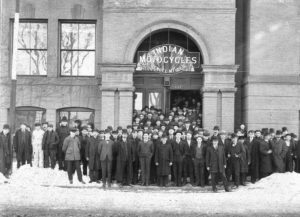
The young man listed as 9 in the original photo is probably Francis H. Foster, born in 1902 in Pennsylvania. His parents were Nelson and Ella, both born in Virginia, and his father worked in Springfield as a foreman at Hendee Manufacturing (later Indian Motorcycles). His story went cold quickly and I found nothing more about him and his life.
The boy marked 11 is George Ivin Clore, born July 13, 1899 in Oak Park, Virginia. His father William (born Aug. 17, 1862 in Madison County, Virginia) and his mother Violet married on July 6, 1880 in Orange County, Virginia. The couple had eight children. Before leaving the south William Clore worked as a servant/laborer and was listed as a farmer in the 1900 census. Once in Massachusetts, he held jobs as a janitor and as a shipper for a clothing store. Sometime after 1910, the family seems to have relocated and by 1918 George was living in Philadelphia and worked for the Adams Express Company. He didn’t serve in WWI but his brother Joe did.
Eventually, George followed his father and brother to Buffalo, New York, where they ran the Hotel Vendome at 175 Clinton Street. During the 1930s-60s the site was an established jazz club hosting such famous players as Louis Armstrong, Willie Bryant, Alberto Socarrás and Don Albert. I love the photo of the Hotel Vendome bar in the 1930s from the collections of the Buffalo and Erie County Public Library. Could that be George himself at the far right? In 1927, George nearly died when the car he was riding in hit a train in the early morning hours of Thanksgiving. Two of the other passengers were killed. He remained a bachelor into his 30s before marrying a woman named Precious. George died in 1966 and Precious passed in 1981.
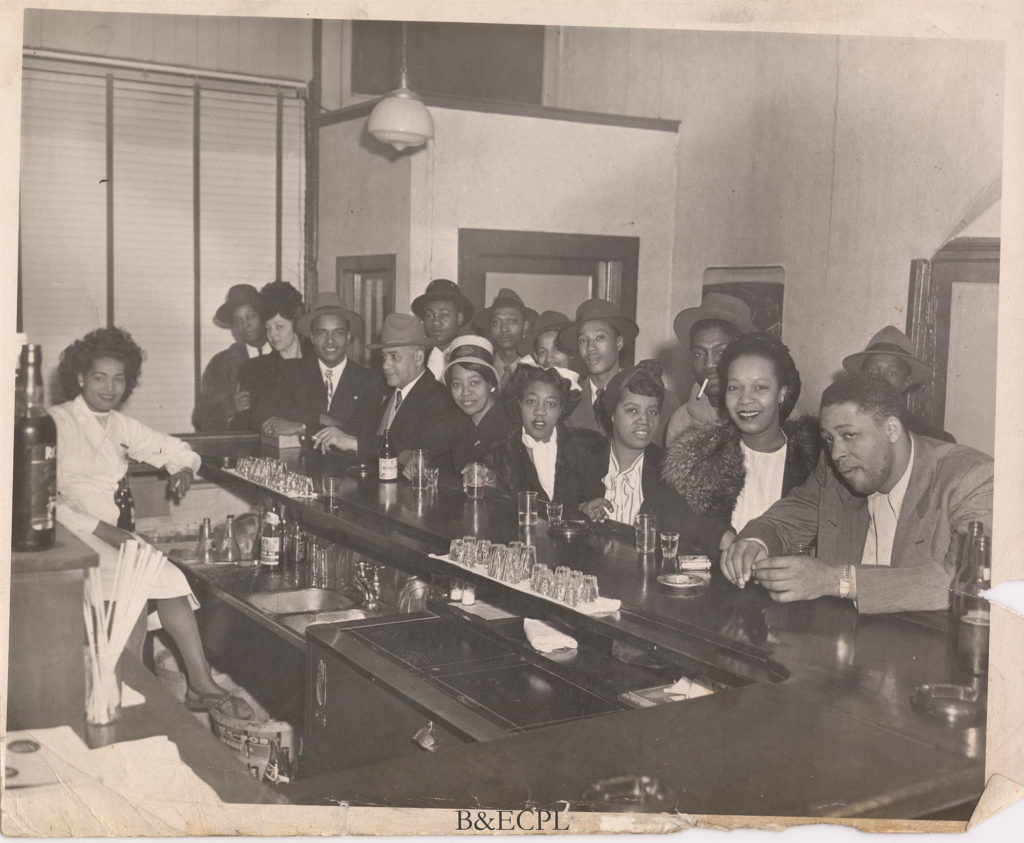
The final young man, number 12, was Harold Arthur Whitfield, born May 5, 1896 in Springfield, Massachusetts. Like the other boys, his people also came from the South – this time North Carolina. His father was Harold (b. 1863) and his mother was Diana (Pope) (b. 1862). The two were married on January 27, 1881 at the home of Miles Pope in Kinston, North Carolina. They moved North in 1888 or 1889 and had seven children. Unfortunately, one of the daughters, Bertha, died of tuberculosis at just 18 years old. Harold the soccer player served in WWI as part of the 807th Pioneer Regiment – one of the segregated units assigned to the French military. Generally, the unit did not face combat and spent most of its time on labor duties. They did, however, take part in the Meuse-Argonne Offensive between Sept. – Nov. 1918 and some of the soldiers earned the Croix de Guerre. The Special Collections and University Archives at the University of Massachusetts Amherst Library hold a letter written by W.E.B. Du Bois welcoming members of the 807th back to the United States. Like other black units, the 807 had a legendary jazz band led by Will Vodery who later worked with George Gerswin, Duke Ellington and Ed Sullivan. Other soldiers from the unit excelled in some of the US Army’s athletic competitions. Eventually, Harold returned to Springfield, was active in his church, and became one of the first African American machinists at the Springfield Armory. He died in 1983.
Sources
Ancestry.com
Democrat and Chronicle
McRae, Richard Kenneth. “Musicians Association Local 533 of the American Federation of Musicians, and its Role in the Development of Black Music in Buffalo, New York.” M.A. Thesis, State University of New York at Buffalo, 1993.
Tucker, Mark. “In Search of Will Vodery.” Black Music Research Journal Vol. 16, 1 (Spring 1996): 123-182.
Spalding’s Soccer Foot Ball Guide. New York: American Sports Publishing, 1910.
Springfield Republican
“Vendome Hotel Bar,” B&ECPL Digital Collections, accessed November 7, 2022, http://digital.buffalolib.org/document/5.
W. E. B. Du Bois Papers (MS 312) Special Collections and University Archives, University of Massachusetts Amherst Libraries.
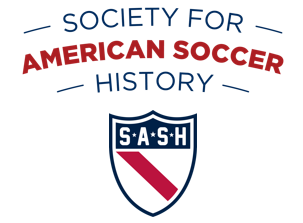
Harold Arthur Whitfield’s mother was Diana Pope of NC. I wonder if there is a relation to Eddie Pope a great, HOF player who is from this general region near Kinston, NC.